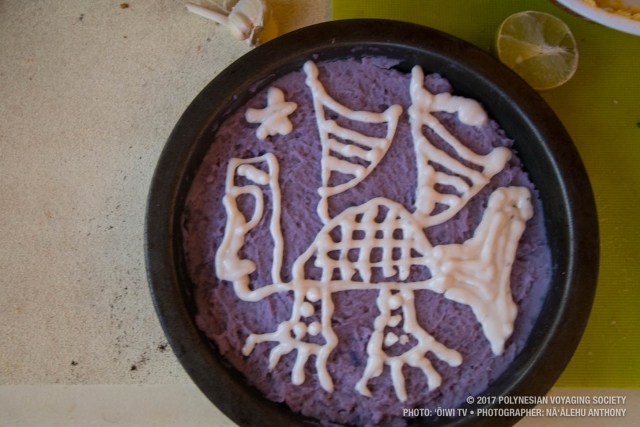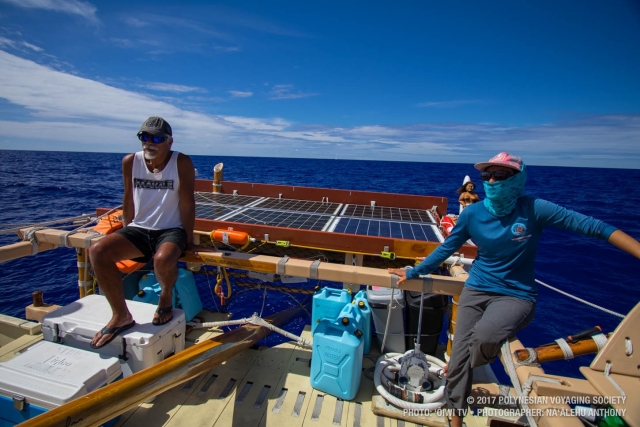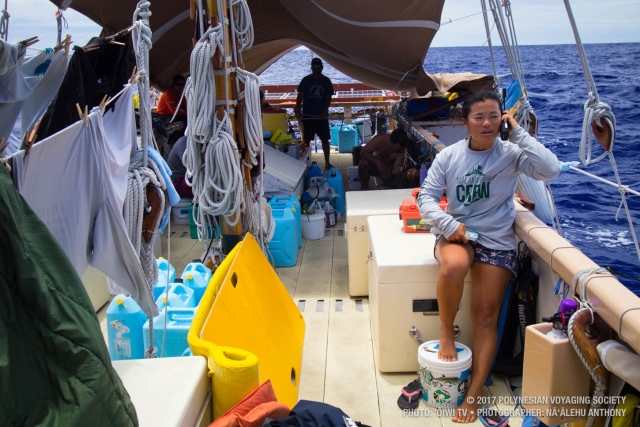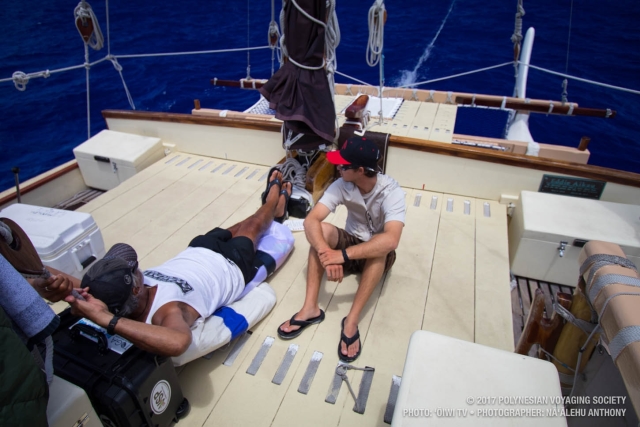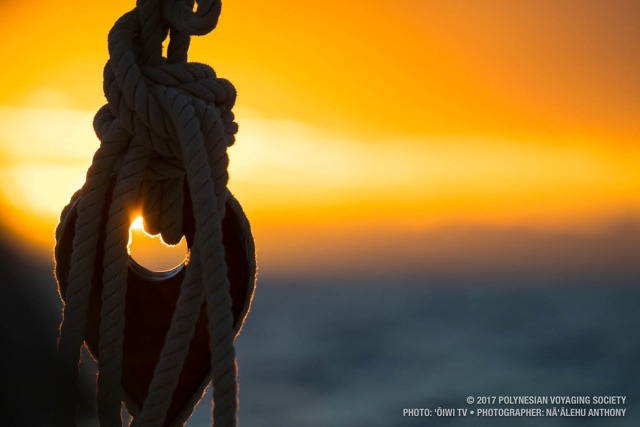
Hōkūleʻa Update | The Turn
- Posted on 23 Feb 2017
- In Newsletter, Teachers, Updates
Blog by Nāʻālehu Anthony
The big question of this leg of the journey?
“When do we turn?”
If you’ve been following our course over the last couple of weeks, you would have seen that we are sailing roughly Nālani Kona (southwest by south), in a pretty straight line. This long line is the first critical step in the process of getting to Rapa Nui. The sail plan for this leg was designed to head generally Nālani Kona until we hit the latitude of Rapa Nui (27o South); at which time we would “make the turn” and head West along that latitude to find the island.
To find an island, we need to know two very important things.
1) Are we East or West of the target? That is – when we reach our target latitude, will we turn to the East or West to find the island?
2) How do we know we have reached our target latitude?
If we have sailed our line with precision, we will know 1) that we are East of Rapa Nui, and 2) that we are at 27o South. In this case, we have kept a line that is far to the East of Rapa Nui so that we are virtually guaranteed that we are to the East when we get to the latitude we seek.
So now we have to answer – how will we know we are at the same latitude of Rapa Nui? There are two ancient tools our navigators use to determine latitude. The first is called dead reckoning – how far did we go, for how long, and in what direction? The navigation team counts up all the miles every day and the direction those miles were traveled in and, after a couple of weeks, you calculate that you have traveled enough miles to get you to the latitude of Rapa Nui (I’m over-simplifying, but you get the idea).
This basic calculation method has all kinds of variability built into it. You get nights where wind slows down and speeds up, making accurate mileage calculations difficult. Squalls come through and you have to close the sails, again changing speeds and therefore miles earned. Sometimes we have to wait for the escort boat or have other reasons to slow down, which again changes speed. All of these variables have to be accounted for and factored into the calculation of where we are as we travel south. After a few weeks, the miles really start to rack up – and with them, the instances where we experience variability, and therefore some of the doubt about our actual latitude.
Lucky for us, we have a second method – we can also tell our latitude by the stars. The navigation team waits patiently in the dark of the night as stars rise and set, looking for the stars they know they can measure, estimating their height above the horizon at their highest point in their arc across the sky to determine latitude. Over the course of the last two weeks, we have gotten clear enough nights even just the handful of times needed to help check our latitude in the stars against the dead reckoning that our navigators tracked all these days. As of sunset last night, we were estimated at 23.45o South. So, we have just a few more degrees to go before the navigation team decides to turn West to look for Rapa Nui. Because the target is so small, the decision of “when to turn” is critical to the success of the voyage.
Literally thousands upon thousands of observations and decisions comes down to that one decision. While all the rest of the work had to be done with precision, it’s a pretty cool thing to me to have all the work point to one choice that will bring an island out of the sea after a few weeks (or not). This is just one of many choices that have to be made by these young navigators that challenges and builds confidence in them as they learn this craft. Stay tuned and follow us on the tracking map at Hokulea.com to see where we make The Turn.
SB 72,
Nāʻālehu
Hōkūle‘a Homecoming – Save the Date
Sign up for updates and be the first to know as we continue to detail homecoming festivities during the week of Hōkūleʻa’s homecoming
on June 17, 2017!
